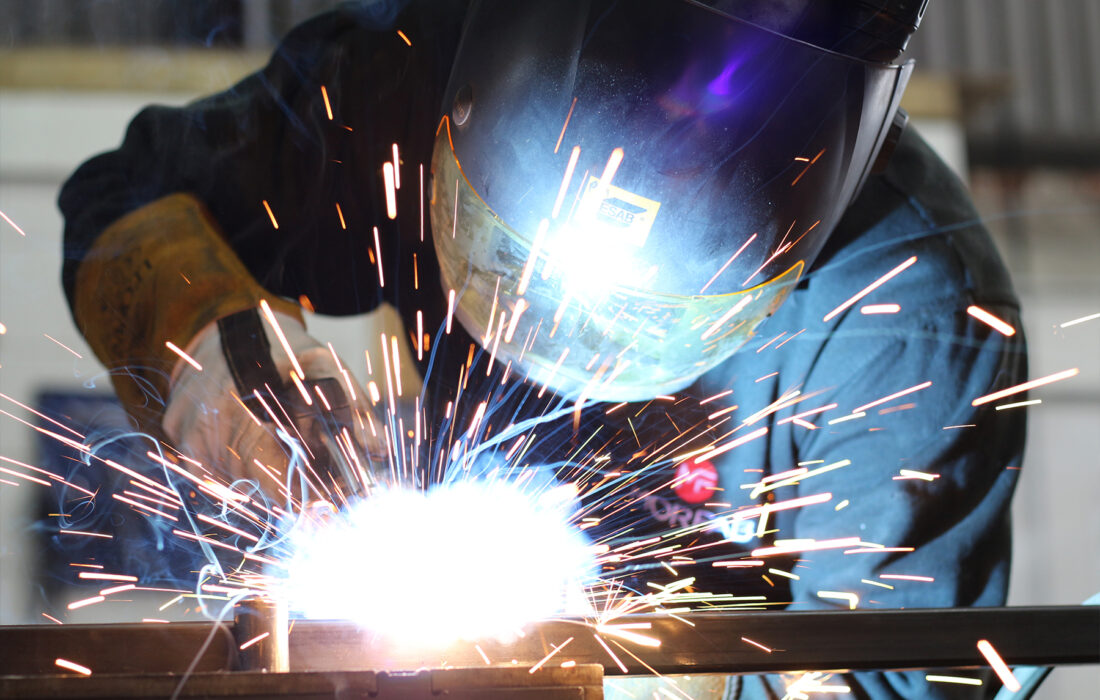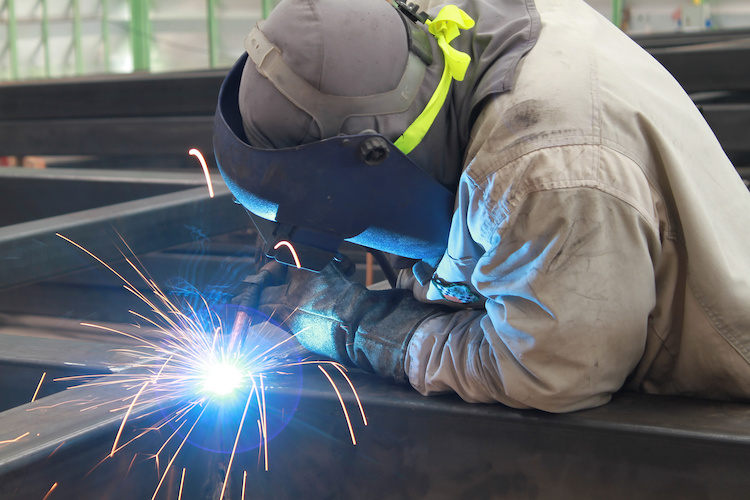Comprehensive Evaluation of Cutting-Edge Techniques in Steel Construction Industry
As the steel manufacture industry proceeds to evolve, the integration of advanced techniques has become vital for staying affordable and satisfying the needs of modern-day production standards. In this dynamic industry where innovation plays an essential duty, recognizing the subtleties of these sophisticated strategies is not just an alternative but a need for those looking to create ahead in the ever-evolving globe of steel fabrication.
Laser Cutting Advancements
In the world of steel construction, laser reducing improvements have revolutionized the accuracy and performance of steel shaping processes. By taking advantage of the power of concentrated laser beams, manufacturers can now attain unparalleled degrees of precision when puncturing different sorts of metals. This technology makes it possible for detailed styles to be performed with marginal material waste, making it an affordable solution for markets requiring high precision components.
Among the essential advantages of laser cutting is its ability to take care of a wide variety of products, including stainless-steel, aluminum, and carbon steel, easily. The process generates tidy, burr-free sides, eliminating the demand for extra finishing actions. Additionally, the non-contact nature of laser cutting minimizes the danger of material contamination, causing higher top quality final product.
Moreover, laser cutting equipments can be configured to make swift, specific cuts, substantially decreasing manufacturing time compared to standard cutting techniques. This speed and precision make laser reducing particularly ideal for mass production atmospheres where performance is paramount. As innovation remains to advancement, laser cutting is poised to play a progressively vital function in the steel manufacture sector.

CNC Machining Innovations
The advancement of CNC machining technologies has ushered in a brand-new period of accuracy and performance in the steel fabrication industry. Computer System Numerical Control (CNC) devices have reinvented steel construction by supplying unparalleled accuracy and repeatability in the manufacturing process. steel fabrication melbourne. One of the crucial innovations in CNC machining is the combination of sophisticated software application systems that allow real-time monitoring and adjustments, leading to enhanced productivity and quality assurance
Furthermore, the growth of multi-axis CNC machines has permitted the manufacture of intricate steel elements with complex styles that were previously testing to generate. These makers can perform a variety of machining procedures, consisting of milling, drilling, turning, and grinding, all with high degrees of precision.
Furthermore, the incorporation of automation and robotics in CNC machining has structured manufacturing processes, decreased preparations, and lessened the margin of mistake. This integration of sophisticated innovations not only boosts performance however also makes sure constant quality throughout all fabricated steel components. In final thought, CNC machining developments remain to drive improvements in the steel fabrication sector, setting brand-new standards for accuracy and performance.
Automated Welding Technologies
Automated welding innovations have transformed the steel fabrication sector, enhancing performance and precision in the welding procedure. These advanced modern technologies utilize computer-controlled systems to automate the welding procedure, leading to greater performance levels and boosted weld quality. Among the key benefits of automated welding is the capacity to carry out intricate welds with consistent accuracy, lowering the possibility of mistakes and rework.
Robot welding systems go to the forefront of automated welding innovations, supplying unequaled rate and precision. These systems can deal with a wide variety of welding tasks, from straightforward to elaborate, with convenience (steel fixing). By making use of advanced sensors and software application, robot welders can adjust to variants in product and joint geometry, ensuring an uniform and trustworthy weld
Furthermore, automated welding technologies improve work environment security by decreasing the direct exposure of human welders to unsafe fumes and extreme heat. As the steel fabrication industry continues to develop, integrating automated welding innovations will certainly be necessary for firms aiming to remain affordable and fulfill the expanding needs for high-grade bonded items.
Robotics Assimilation in Manufacture
Making use of robot systems in construction processes has become a critical strategy for enhancing efficiency and accuracy in modern-day production atmospheres. Robotics combination in steel fabrication offers a myriad of benefits, consisting of raised performance, boosted top quality control, and improved precaution. These innovative robot systems are furnished with sophisticated sensing units and shows abilities, enabling them to perform complex jobs with a high level of accuracy and repeatability.
Among the crucial advantages of robotics assimilation in steel manufacture is the ability to automate recurring jobs, such as material handling, reducing, welding, and setting up processes. This not just accelerates production cycles however also lowers the danger of human error, bring about higher total product top quality. Furthermore, robotics can operate 24/7, significantly improving production result and meeting limited job target dates.

3D Printing in Steel Production
Having actually changed the steel fabrication market through robotics assimilation, the expanding exploration of 3D printing in steel manufacturing is poised to additional development the world of modern-day production techniques. 3D printing, also called additive manufacturing, uses extraordinary layout freedom and complexity, enabling the creation of intricate steel structures that were previously unattainable through conventional production techniques. By making use of computer-aided layout (CAD) software, producers can exactly manage the layer-by-layer deposition of steel material, resulting in parts with enhanced functionalities and geometries.
One of the key benefits of 3D printing in steel manufacturing is its capability to decrease material waste significantly. Unlike subtractive manufacturing procedures where excess product is trimmed away, 3D printing only makes use of the essential quantity of steel required for the final component. This performance not just causes cost savings yet likewise lines up with sustainable production methods by reducing environmental influence.
Additionally, 3D printing allows rapid prototyping and modification, permitting the production of small sets of complex steel components with brief lead times. As the modern technology proceeds to grow and end up being much more accessible, its assimilation into mainstream steel manufacture procedures is expected to drive technology and effectiveness throughout the market.
Conclusion
In final thought, the steel construction sector has actually seen substantial advancements in techniques such as laser cutting, CNC machining, automated welding, robotics integration, and 3D printing. These advanced innovations have transformed the method steel products are manufactured, resulting in enhanced precision, performance, and cost-effectiveness. Continued financial investment in these cutting-edge strategies is vital for the sector to stay competitive and meet the needs of contemporary manufacturing processes.
As the steel manufacture market continues to evolve, the integration of cutting-edge strategies has actually ended up being important for staying affordable and satisfying the demands of modern-day production standards.One of the vital benefits of laser cutting is its ability to deal with a broad array of products, including stainless steel, light weight aluminum, and carbon steel, with simplicity.Automated welding technologies have actually transformed the steel manufacture market, enhancing performance and precision in the welding process.Having actually transformed the steel fabrication market through robotics combination, the growing expedition of 3D printing in steel manufacturing is positioned to further development the realm of contemporary manufacturing methods.In conclusion, the steel construction industry has seen substantial developments in strategies such as laser cutting, CNC machining, automated welding, robotics integration, and 3D printing.
Comments on “Why Alpha Reo Is the Leading Option for Steel Reinforcement”